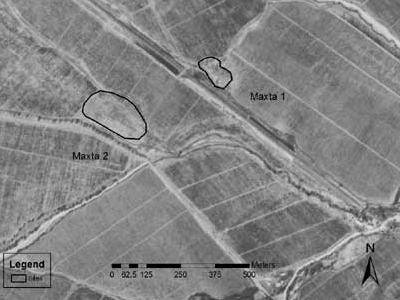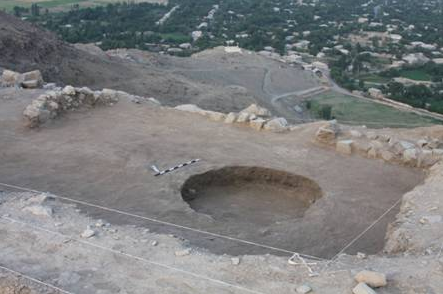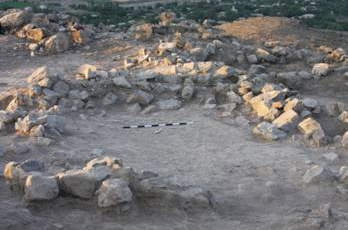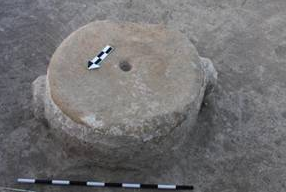Perched atop the 50 ha Karatepe, Oğlanqala is probably the largest Iron Age fortress in Naxçıvan and one of the largest in the South Caucasus (Figure 1). The site is located in a position to control the fertile Şərur plain, the most agriculturally productive area in Naxçıvan, and the Arpaçay pass into the Lesser Caucasus. Excavations in 1988-1989 at Oğlanqala uncovered tantalizing evidence that the site was an important political center during the early and mid-Iron Age. 1 Four years of further excavation from 2008-2011 have confirmed this earlier hypothesis, providing new information indicating that Oğlanqala was probably an independent polity in the middle Iron Age with economic and cultural connections to neighboring Urartu, a fortress center at the end or just after the fall of the Achaemenid empire, and a wealthy fortified town in the last centuries BC.2
Our excavations have defined five periods, four ancient and one modern at Oğlanqala. The site was founded sometime between 1200 and 800 BC during the early Iron Age, Period V, but the architecture at the citadel dates to the Middle Iron Age, Period IV, between 800 and 600 BC and the Late Iron Age, Period III, between 400 and 250 BC. From 200 BC-100 AD (Period II) most of the mountain was covered by a large fortified town. During this period, the site may have been known as Olane, a town mentioned by Strabo in his geography. 3 Finally, ephemeral architecture, pottery and graves dating to the Medieval and Modern periods cover much of the site (13th to 20th centuries AD), including glazed Ilkhanid pottery (Period Ib) and Russian Imperial coins (Period Ia).
Conclusions and Future Research Plans
Our first four years of excavation have provided important new information on political and economic developments within Naxçıvan during the first millennium BC and on the changing relationships between Naxçıvan and the larger Near East. Specifically, our work has focused on the foundation of Oğlanqala around 1000 BC, the construction of the citadel and fortifications around 800 BC, when it probably became the capital of a small polity on the Şərur Plains and its renovation between 350 and 250 BC, while it was incorporated into the larger Achaemenid and Hellenistic worlds. The 2011 season allowed us to investigate the relationship of Oğlanqala to the Parthian and Roman empires. Specifically, we learned that the inhabitants of the town employed elite Roman material culture in their burial practices, despite the local nature of the ceramics and houses. In the future we hope to continue our excavations in the citadel, to clarify further the relationship between this city and Urartu and the Achaemenid Empire. We also hope to excavate more houses from Period II, to find new information on the cultural and economic relationship between Naxçıvan and outside empires during the last few centuries BC. Our success so far has been made possible by strong support from the government of the Autonomous Republic of Naxçıvan, the Azerbaijan National Academy of Sciences and the National Science Foundation of the United States. We are grateful for their assistance and hope that the Azerbaijani-American excavations can continue for many more years.




